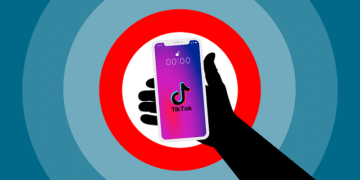Dating often presents situations that are not easily interpretable. While we may be flooded with advice and tips on ‘ideal dating,’ the fact remains that each individual is a distinct entity with unique inclinations. Shedding light on perplexing dating behaviors can offer insight into human psychology and relationships.
Analyzing the “Hot and Cold” Approach
One common confusing behavior is the “hot and cold” approach. One minute, your date acts like you’re the most important person, and the next, they’re completely aloof. It might seem like a whirlwind, but there are ways to understand this behavior. First, consider the context: are there external factors causing stress? If not, you could be receiving mixed signals when dating. Establishing communication is key; instead of assuming, ask what’s going on.
Understanding the “Breadcrumbing” Phenomenon
Have you ever been in a situation where someone you’re dating occasionally sends flirty texts but doesn’t follow up? That’s breadcrumbing, leading someone on without the intention of committing. It’s often a means of keeping options open. To handle this, evaluate your comfort level with casual interaction and decide whether you want to stay or move on.
Deciphering “Ghosting”
When someone suddenly stops responding to your texts, calls, or emails, you’ve been ghosted. While it’s easy to internalize this behavior as a reflection of your worth, it usually says more about the person doing the ghosting. They might have intimacy issues or a fear of confrontation. Rather than obsessing over why, it’s healthier to focus on moving on.
The Mystery of “Orbiting”
You’ve likely come across orbiting if you’ve been ghosted, but your ex continues to engage with your social media. This confusing behavior could indicate a fear of commitment or a desire for emotional distance while maintaining a window into your life. You have the power to decide if this is acceptable or to block them from your virtual life.
The Puzzling “Cushioning” Tactic
“Cushioning” is when someone you’re dating keeps in touch with other romantic interests “just in case” the main relationship doesn’t work out. Signs include being secretive about their phone or avoiding defining the relationship. The best course of action is to talk openly about your expectations.
“Zombie-ing”: The Return of the Ghost
In this confusing behavior, a person who previously ghosted you suddenly reappears, often with a random text or interaction on social media. This can bring up old emotions, making you question whether to re-engage or not. While there’s no one-size-fits-all answer, be cautious and think about what you hope to gain if you re-enter this unpredictable dynamic.
“Stashing” and Hidden Status
“Stashing” occurs when you’re in a relationship with someone who keeps you away from other significant people in your life. You haven’t met their friends or family, and you’re absent from their social media. This is a tactic used to keep options open without committing. If you find yourself being “stashed,” it’s worth considering if this is the type of relationship dynamic you want to be part of.
Decoding “Submarining”
Submarining is similar to zombie-ing but occurs after a longer period. The person disappears and resurfaces after a significant time, acting as if nothing happened. This behavior may be driven by a fear of commitment or emotional unavailability. The recommended approach is to reassess what you’re looking for in a relationship and act accordingly.
“Love Bombing” Explained
This occurs when someone overwhelms you with affection and gifts early in the relationship but can’t maintain this level of attention. This could be a red flag for manipulative behavior. It’s advisable to proceed with caution, particularly if the affection feels too intense too soon.
Handling “Haunting”
Different from ghosting or orbiting, haunting involves sporadic yet consistent interaction. You might get a text once every few weeks, keeping you in limbo. It’s emotionally unsettling, keeping you on the hook without the promise of a committed relationship. It’s important to decide your own boundaries if you find yourself being haunted.
Unpacking “Benching”
Benching is a behavior where someone you’re interested in keeps you “on the bench” while they explore other options. You’re good enough to keep around for emotional support or occasional outings but not quite the person they want to commit to fully. They keep you in the loop with just enough attention to ensure you stay interested, but the relationship doesn’t progress. If you notice a lack of consistency or find that your interactions are limited to specific settings or times, it could indicate you’ve been benched. Evaluating whether this dynamic aligns with what you’re seeking in a relationship is an important step to take.
Interpreting “Mosting”
Mosting is a term used to describe someone who goes out of their way to make you feel incredibly special, only to disappear entirely soon after. They’ll compliment you excessively, talk about a future together, and give you the impression that you’re the one they’ve been waiting for. And then, without warning, they’re gone. The sudden switch can be disorienting and emotionally painful. Identifying the inconsistency between words and actions is a useful way to understand if you’ve been subjected to mosting. Once identified, considering whether you’re willing to accept this level of unpredictability is essential.
Scrutinizing “Cookie-Jarring”
In the cookie-jarring dating phenomenon, a person treats you as a back-up option while they’re dating other people. They reach out periodically and give you small amounts of attention to keep your interest alive. The confusing part is that they never fully commit to making you a priority but never completely cut off contact either. Being on the receiving end can be confusing, as you may feel both valued and overlooked. To deal with this, taking stock of your emotional investment and deciding what you want to gain from the relationship can offer some clarity.
Conclusion
Deciphering confusing dating behavior can significantly alleviate anxiety and misunderstanding in relationships. It allows individuals to better understand their partners and themselves, encouraging a more fulfilling and meaningful connection with others.




























